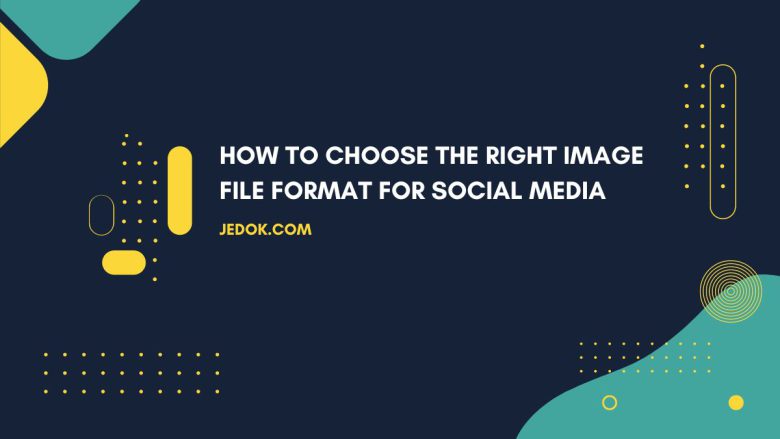
In today’s digital age, visuals play a pivotal role in social media engagement. Choosing the right image file format is key. It affects your content’s performance, whether you’re a business, influencer, or casual user. The right format makes your images look good. They load fast and display correctly on all platforms. This guide will explore the most popular image file formats. It will help you choose the best one for social media.
Understanding Image File Formats
Before diving into recommendations, we must know the image file formats and their traits.
1. JPEG (Joint Photographic Experts Group)
Pros:
- Compression: JPEG files use lossy compression, which reduces file size significantly while maintaining acceptable quality. This makes them ideal for web use where loading speed is crucial.
- Universal Compatibility: JPEGs are widely supported across all devices and platforms.
Cons:
- Quality Loss: Repeated saving of JPEGs can degrade image quality due to cumulative compression.
- Limited Editing: JPEGs are not ideal for images that require multiple edits or transparency.
2. PNG (Portable Network Graphics)
Pros:
- Lossless Compression: PNG files use lossless compression, preserving image quality.
- Transparency: Supports transparent backgrounds, making it perfect for logos and graphics.
Cons:
- Larger File Size: PNGs tend to have larger file sizes compared to JPEGs, which can affect loading times.
3. GIF (Graphics Interchange Format)
Pros:
- Animation: GIFs support simple animations, making them popular for memes and short animations.
- Transparency: Like PNGs, GIFs support transparent backgrounds.
Cons:
- Limited Colors: GIFs are limited to a 256-color palette, which can reduce image quality.
- Large File Sizes: Animated GIFs can become quite large, affecting performance.
4. TIFF (Tagged Image File Format)
Pros:
- High Quality: TIFF files offer excellent image quality with lossless compression.
- Flexibility: Supports multiple layers and pages, making it ideal for professional photography and publishing.
Cons:
- Very Large File Sizes: Not suitable for web use due to significant storage requirements.
- Limited Web Compatibility: Not universally supported by web browsers and platforms.
5. SVG (Scalable Vector Graphics)
Pros:
- Scalability: SVGs are vector-based, meaning they can be scaled to any size without losing quality.
- Interactivity: Supports interactivity and animation, ideal for web graphics and logos.
Cons:
- Complexity: Not suitable for detailed images or photographs.
- Limited Support: Some older browsers and platforms may not fully support SVGs.
Choosing the Right Format for Different Social Media Platforms
Each social media platform has its own set of requirements and best practices for image formats. Here’s a breakdown of the most suitable formats for popular platforms:
1. Facebook
- Profile and Cover Photos: JPEG or PNG. Use JPEG for photos and PNG for graphics with text or logos.
- Shared Images: JPEG is preferred for its balance of quality and file size.
- Ads: JPEG or PNG, depending on the content. PNG is better for images with text.
2. Instagram
- Posts: JPEG is the best choice due to its compression and quality balance.
- Stories: JPEG for photos, PNG for graphics with transparent elements.
- Ads: Similar to posts, JPEG is typically the best choice.
3. Twitter
- Profile and Header Photos: JPEG or PNG. PNG is recommended for images with text or logos.
- Tweets: JPEG is preferred for its compression capabilities.
- Ads: JPEG or PNG, depending on the ad content.
4. LinkedIn
- Profile and Background Photos: JPEG or PNG. PNG for graphics with text or logos.
- Shared Images: JPEG for best performance.
- Ads: JPEG or PNG, similar to shared images.
5. Pinterest
- Pins: JPEG is ideal for photos. PNG is suitable for infographics and images with text.
- Profile Photos: JPEG or PNG.
6. Snapchat
- Stories: JPEG for photos, PNG for graphics with text or logos.
- Ads: JPEG or PNG, depending on the content.
Tips for Optimizing Images for Social Media
1. Maintain the Right Resolution
Each platform has recommended image resolutions. Ensure your images meet these requirements to avoid distortion or pixelation.
- Facebook: Profile (180×180), Cover (820×312), Shared (1200×630)
- Instagram: Profile (110×110), Post (1080×1080), Story (1080×1920)
- Twitter: Profile (400×400), Header (1500×500), Shared (1024×512)
- LinkedIn: Profile (400×400), Background (1584×396), Shared (1200×627)
- Pinterest: Profile (165×165), Pin (1000×1500)
- Snapchat: Story (1080×1920)
2. Compress Images Without Losing Quality
Use tools like TinyPNG, JPEGmini, or online compressors to reduce file sizes while maintaining quality. This helps improve loading times and user experience.
3. Use the Right Color Profile
Ensure your images use the sRGB color profile, which is the standard for web images. This ensures consistent color rendering across different devices and platforms.
4. Add Alt Text and Descriptions
For platforms that support it, like Facebook and LinkedIn, add alt text and descriptions to your images. This not only improves accessibility but also enhances SEO.
5. Test Your Images
Before uploading, test your images on different devices and screens. Make sure they display correctly and look good.
Conclusion
Choosing the right image format for social media is crucial. It ensures quality, fast loading times, and a great user experience. Know each format’s strengths and weaknesses, and each platform’s needs. This will improve your social media presence. Optimize your images for resolution, file size, and color profile. Always test them before publishing. These best practices will help you create stunning, engaging social media content.


